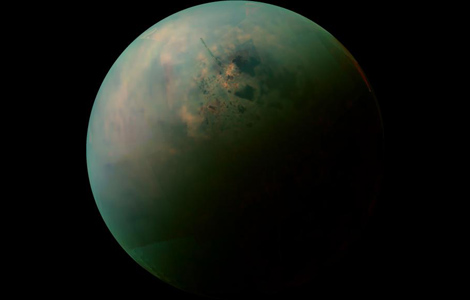Is Silicon-Based Life Possible?
As we look for biosignatures on other planets, we should guard against being too Earth-centric
Many of the space missions we send to Mars and other planets search for evidence of life. Or rather, they search for life as we know it — life that’s made of carbon, requires liquid water, and uses light or chemical energy as its main energy source. Sara Seager and her colleagues from MIT, William Bains and Renyu Hu, want to expand this “earth-centric” approach. They suggest looking for any gas that is out of equilibrium as a possible signature of life on exoplanets. (We say “possible” because geological processes, particularly volcanic eruptions, can also affect the equilibrium.)
On Earth, the out-of-equilibrium gases oxygen and methane are a biosignature. If they were not constantly replenished by life processes (plants that produce oxygen and bacteria that produce methane) the two gases would react to produce the relative inert gas carbon dioxide.
Seager and her colleagues built a model that predicts how elements might combine naturally in the atmospheres of other planets. By comparing the model to actual observations of exoplanet atmospheres, the presence of life might be revealed. For example, for planets with atmospheres dominated by hydrogen, the model predicts that methyl chloride, dimethyl sulfide and nitrous oxide could indicate the presence of life. Researchers are hoping that the James Webb Telescope, due to launch in 2018, will be able to detect biosignatures such as these.
Speculations about weird life on other planets have always been popular among scientists and science fiction readers. It would be extremely “earth-centric” to presume that the biochemistry on our planet is the only way life can operate. But just how different can it be? One extreme example are the “Horta,” the silicon-based life portrayed in Star Trek. Could we expect organisms like that on a terrestrial, meaning Earth-type, planet? Most likely not, because the biochemistry of life is intrinsically related to its environment. On Earth, silicon and oxygen are the main building blocks of Earth’s crust and mantle. Most rocks, particularly volcanic and igneous rocks, are built from silicate minerals, which are based on a silicon and oxygen framework. Any free silicon would be bound in these rocks, which are inert at moderate temperatures. Only at very high temperatures does the framework become more plastic and reactive, which led Gerald Feinberg and Robert Shapiro to suggest the possible existence of lavobes and magmobes that could live in molten silicate rocks. Yet no one has ever discovered any traces of extinct life or fossils in a granite or basalt, suggesting that carbon, with its matching solvent, water, simply works so much better than silicon as a building block for life on an Earth-type planet.
But not all is lost for the possibility of silicon-based life. On an extreme world like Titan, there is no oxygen in the atmosphere and all water is frozen solid, so silicon is not oxidized right away into inert rock. Further, Titan has liquid methane and ethane on its surface, and methane would be a good solvent for silicon. Silicon molecules such as silanes (SiH4) and polysilanes (compounds with multiple SiH4 groups) mimic organic chemistry on Earth. They would be stable and could be the start of an alien biochemistry.
Should we expect silicon-life on Titan, then? Probably not — unfortunately, there is too much carbon around to react with other compounds abundant in the Titan environment, and too little silicon, most of which is locked up in the deep interior. Still, if there is life on Titan, silicon may be used more as a building material than it is for life on Earth. Even on our own planet, the common algae known as diatoms require silicon for growth, and silicic acid is found in hair, nails, and the epidermis. Life is often much more inventive than we think.
/https://tf-cmsv2-smithsonianmag-media.s3.amazonaws.com/accounts/headshot/Dirk-Schulze-Makuch-headshot.jpg)

/https://tf-cmsv2-smithsonianmag-media.s3.amazonaws.com/accounts/headshot/Dirk-Schulze-Makuch-headshot.jpg)